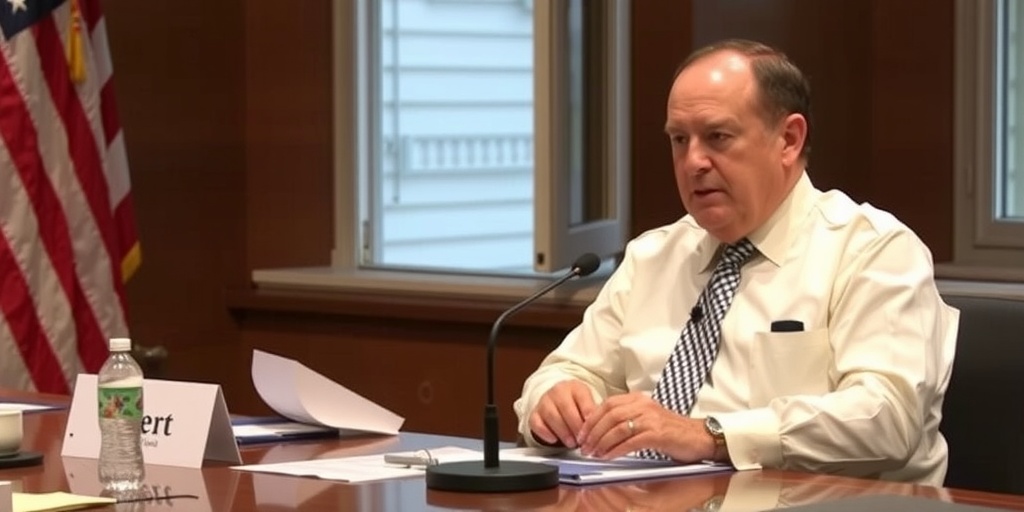Now Reading: Former National Nuclear Security Administration Employees: Share Your Experiences!
-
01
Former National Nuclear Security Administration Employees: Share Your Experiences!
Former National Nuclear Security Administration Employees: Share Your Experiences!

NNSA Firings Raise Concerns About Workforce Impact
The National Nuclear Security Administration (NNSA), an agency within the U.S. Department of Energy, has recently come under scrutiny following a series of firings that have raised questions about the agency’s operational integrity and workforce stability. Reports have surfaced claiming that fewer than 50 NNSA employees were dismissed, primarily from administrative or clerical roles. However, current investigations challenge this assertion, suggesting that the impact of these firings extends far beyond clerical tasks and significantly affects the agency’s mission.
As journalists delve into the ramifications of these terminations, there is a particular interest in hearing from former employees who held non-administrative positions, especially those with high-level security clearances. These individuals may provide invaluable insights about the agency’s functioning and the broader implications of workforce changes.
One aspect of the story that is drawing significant attention is the categorization of the fired employees. While the NNSA claims that most of those let go were in administrative roles, former employees assert that many of their jobs were integral to the agency’s mission of national security. The administration’s statement that the overall workflow remains unaffected has been met with skepticism by those aware of the operations within the NNSA.
In light of these developments, the New York Times is actively seeking information through a reader questionnaire aimed at uncovering more details about the firings. The questionnaire serves as an avenue for former NNSA employees to share their stories and experiences regarding the firings, and whether they subsequently faced challenges in getting re-hired.
The call for testimonies emphasizes the need for a comprehensive understanding of the workforce dynamics at the NNSA. It is particularly critical to hear from those who were not re-hired after their positions were eliminated. The newspaper assures participants that any shared information will be treated with utmost confidentiality, and no responses will be published without verification and permission.
Key questions in the survey focus on the nature of the positions held by former employees, the presence or absence of security clearances, and the impact of the layoffs on the agency’s operational capacity. Testimonials gathered could reveal a different narrative than that presented by the NNSA, showcasing the realities faced by employees within the agency and the potential downsides of the firings.
Moreover, the survey also asks respondents whether they know of other individuals who may have been adversely affected by the firings. The aim here is to create a fuller picture of the agency’s current climate and the collateral effects of these personnel changes.
Responses will also touch on the communication that employees received from their managers regarding the justification for the firings. Understanding what was conveyed to employees can provide context to the broader implications of these decisions and whether there was a systematic rationale behind them.
In addition to gathering personal stories, the questionnaire encourages participants to share any documents that could shed light on the situation at the NNSA. These could include internal communications, performance reviews, or any other material that might provide critical evidence of how the firings have influenced the agency’s capability to address its responsibilities in national security.
The energy sector is not only pivotal for maintaining the country’s nuclear stockpile and ensuring the security of nuclear facilities, but it is also paramount to the U.S.’s standing in the global nuclear non-proliferation landscape. A well-functioning NNSA is crucial, and any disruption to its workforce can have lasting implications for national security.
It is essential for the public to understand the effects of personnel changes at such a crucial agency, and the New York Times aims to highlight the voices of those most directly impacted. As the investigation unfolds, the testimonies compiled could either corroborate or challenge the official narrative put forth by the NNSA, setting the stage for critical discussions about workforce management and transparency in government agencies.
By addressing the real experiences of former employees, the article aims to paint a clear picture of the operational realities at the NNSA and what the firings could mean for the agency’s future effectiveness in executing its core mission. As engagement with former employees intensifies, the forthcoming findings will hopefully bring clarity to this significant issue facing the agency and contribute to a more informed public discourse on the implications of workforce cutbacks in sensitive government operations.
Stay Informed With the Latest & Most Important News
Previous Post
Next Post
-
 01New technology breakthrough has everyone talking right now
01New technology breakthrough has everyone talking right now -
 02Unbelievable life hack everyone needs to try today
02Unbelievable life hack everyone needs to try today -
 03Fascinating discovery found buried deep beneath the ocean
03Fascinating discovery found buried deep beneath the ocean -
 04Man invents genius device that solves everyday problems
04Man invents genius device that solves everyday problems -
 05Shocking discovery that changes what we know forever
05Shocking discovery that changes what we know forever -
 06Internet goes wild over celebrity’s unexpected fashion choice
06Internet goes wild over celebrity’s unexpected fashion choice -
 07Rare animal sighting stuns scientists and wildlife lovers
07Rare animal sighting stuns scientists and wildlife lovers





















